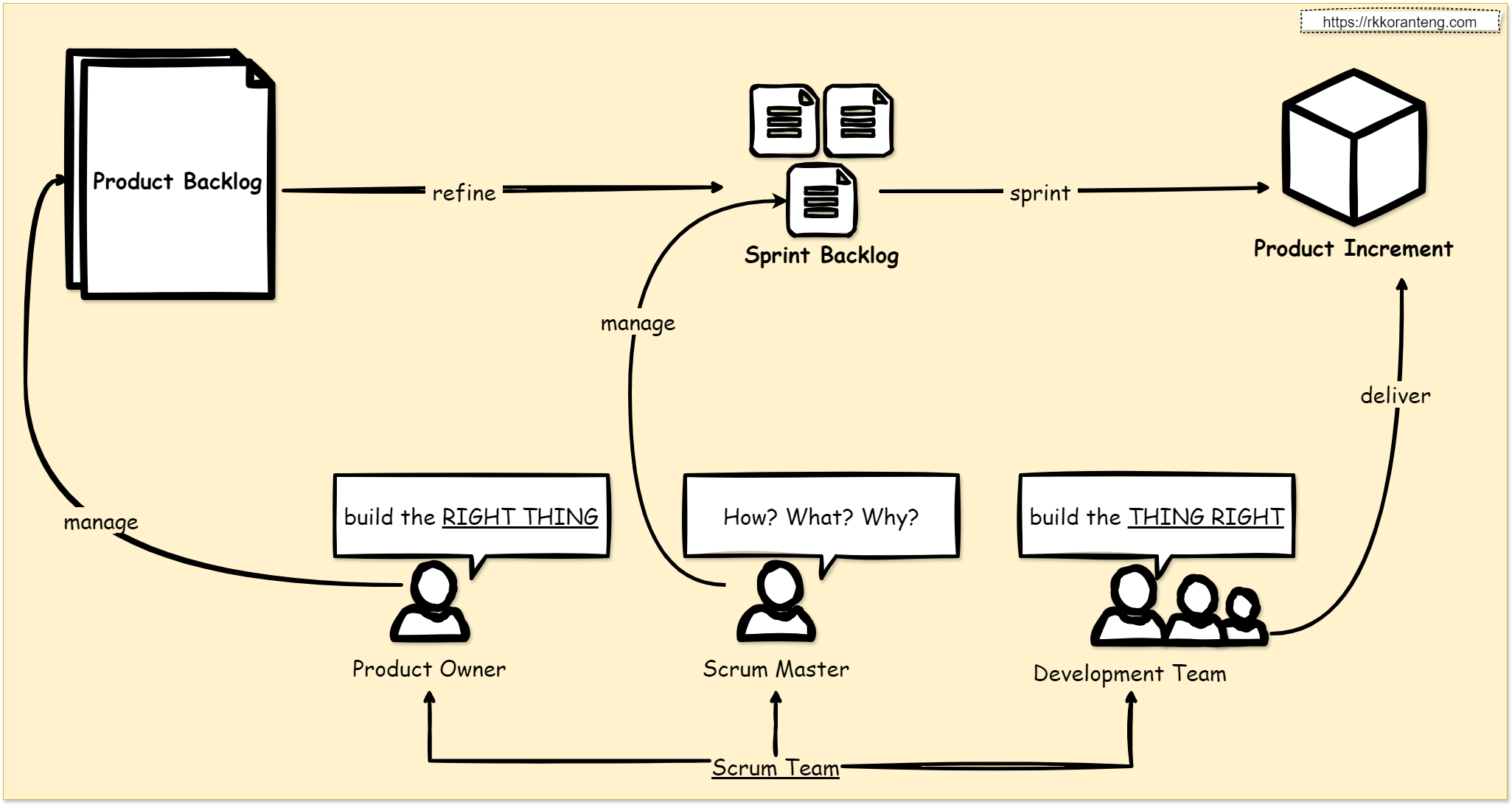Scrum - Artifacts
The term artifact is often associated with archaeological ruins and ancient relics. Yet in IT, the term artifact refers to key information needed during the development of a product. The main scrum artifacts are product backlog, sprint backlog, and increments.
1. Product backlog
The product backlog is a a live artifact (meaning that it is updated on-demand as new information is available) containing list of new features, enhancements, bug fixes, tasks, or work requirements needed to build the product. It’s compiled from input sources like customer support, competitor analysis, market demands, and general business analysis.
2. Sprint backlog
The sprint backlog is a set of tasks that have been selected from the product backlog and prioritized to be worked on during the next sprint. These tasks are generally broken down into smaller actionable items. Consider a product backlog example task like “build a shopping cart page”. The sprint backlog for such a task requires many design and development subtasks, for example the DBA would have a supporting task such as “create the schema for shopping cart”.
3. Product increment
Think of the product increment as the version of the product that will be delivered at the end of each sprint. In scrum, a product increment is the sum of all completed work within a sprint, plus any previous completed work. It’s a key deliverable in scrum and it’s typically demoed for stakeholders.
